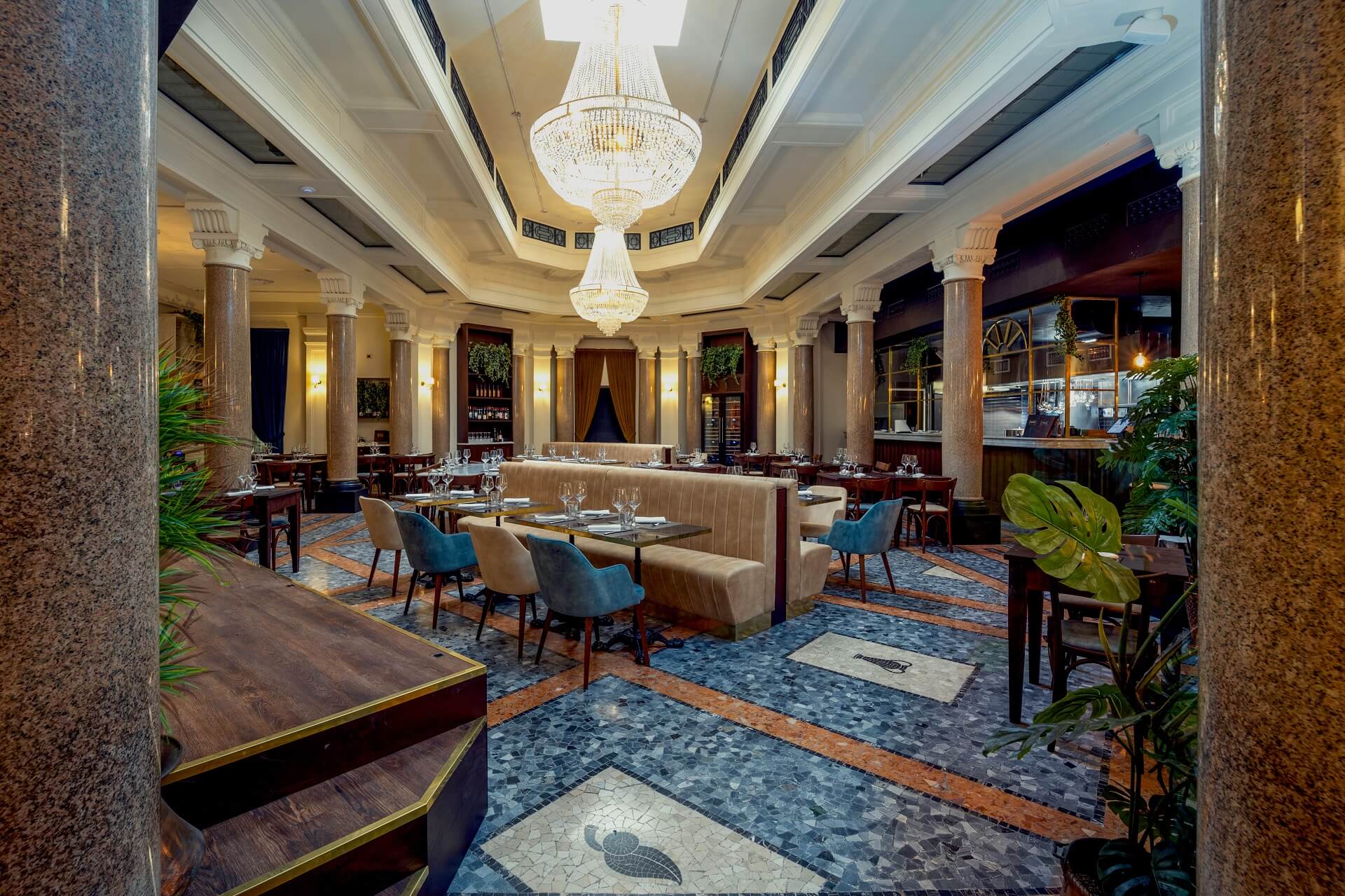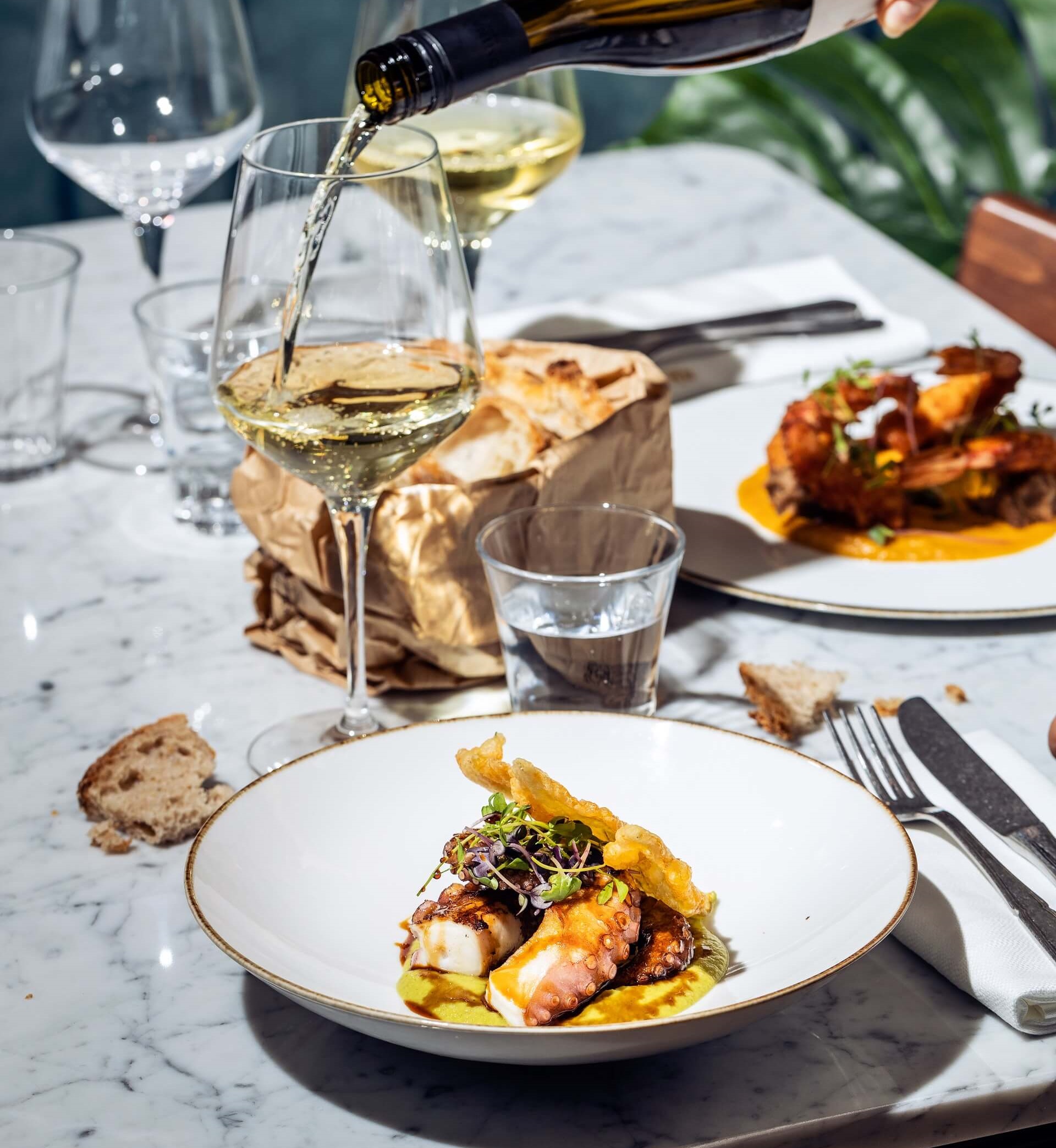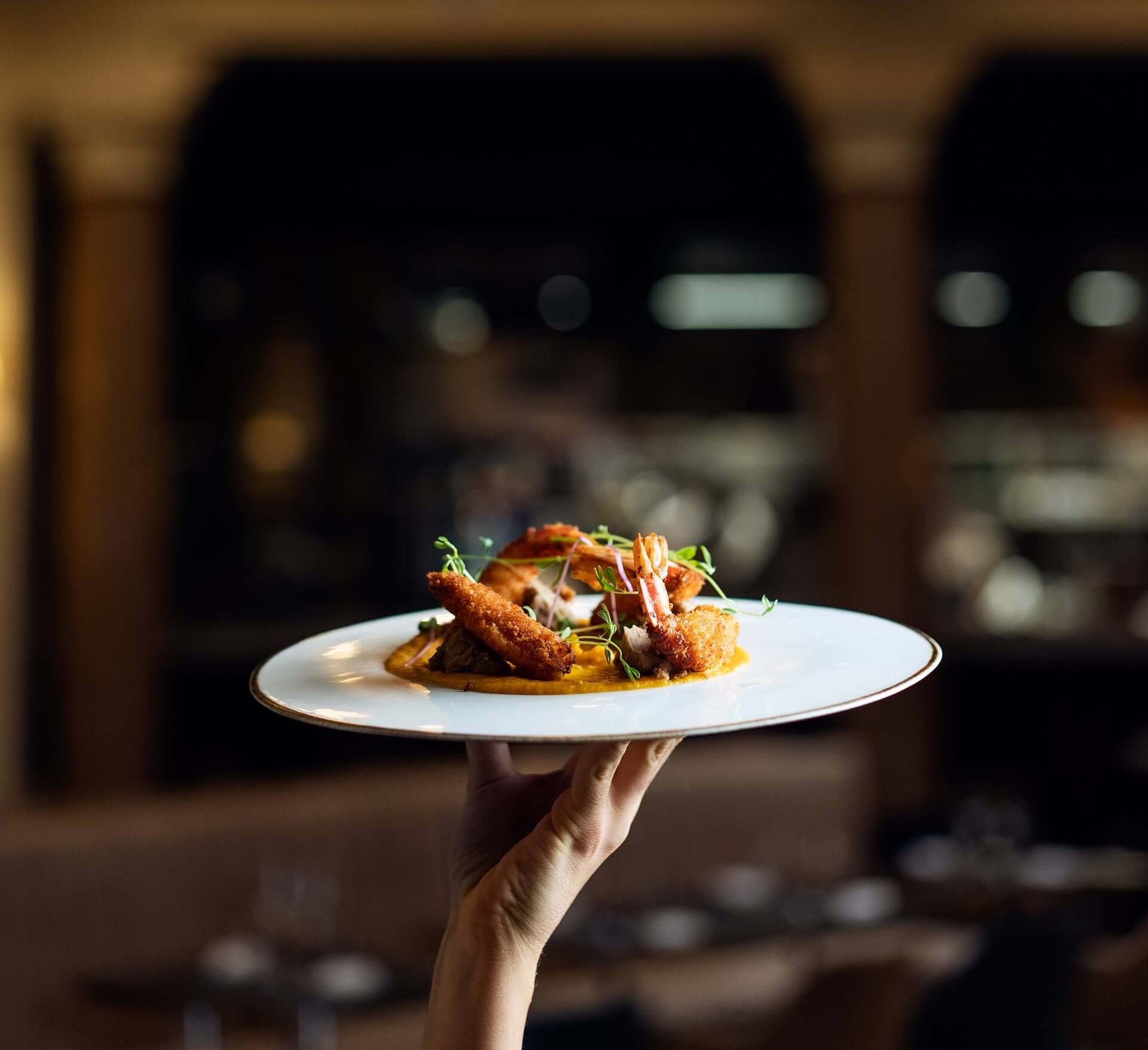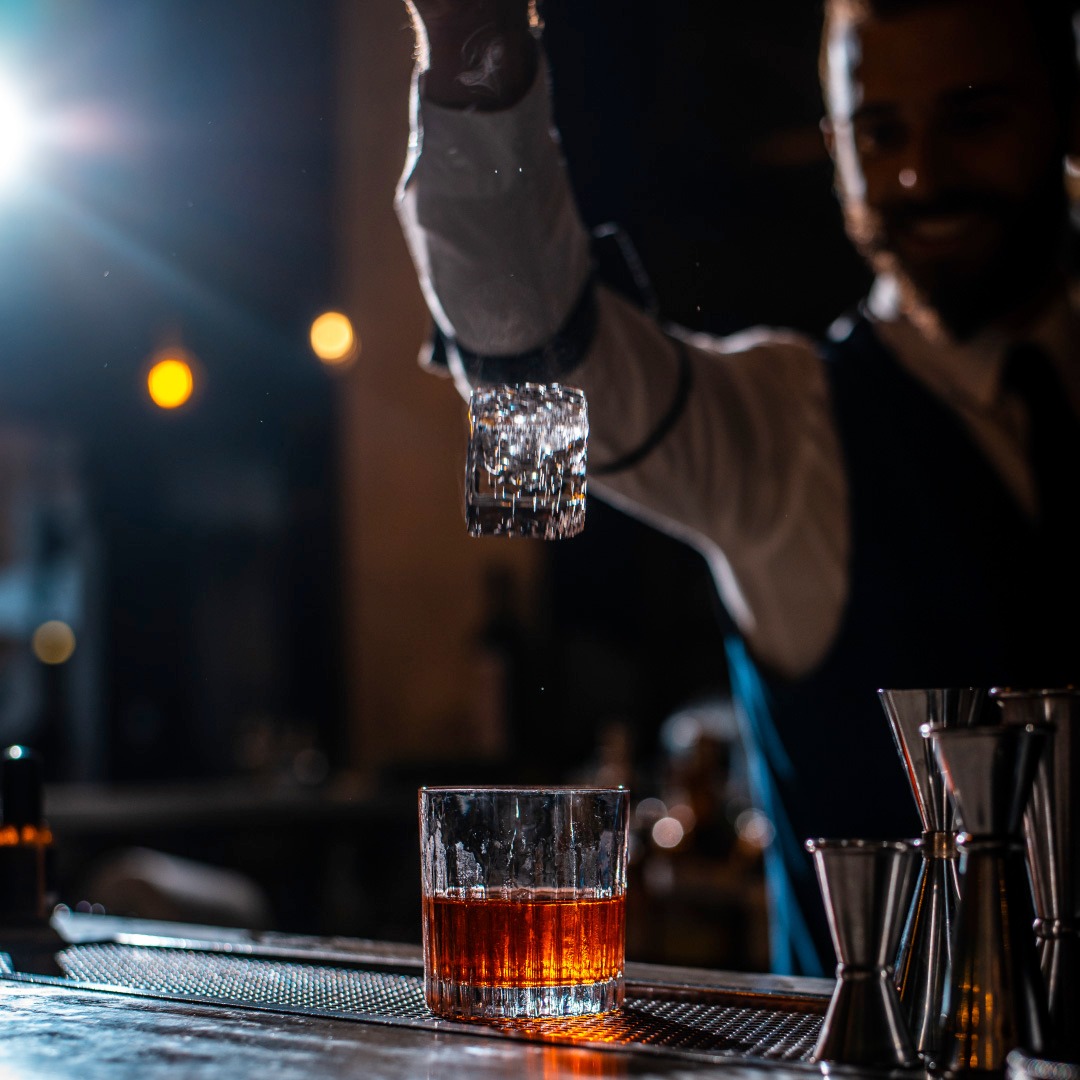Il Marchese, the cosmopolitan restaurant and cocktail bar, inspired in design and decor by the settings of the famous film “Il Marchese del Grillo,” after its success in Rome, lands its newest location in Milan, in the artistic district of Brera – just a stone’s throw from the Teatro alla Scala and the Duomo – bringing to the Lombard capital all the overwhelming charm of the nobility and the nineteenth-century Capitoline people.
The Eternal City comes to Milan with a contemporary Roman culinary authenticity inspired by tradition that does not forget the most veracious gastronomic anthems it is so well known for. The project features the restaurant and cocktail bar “Il Marchese – Osteria, Mercato e Liquori.”
The second venue of Il Marchese eatery promises to be no less than its “twin” on Via Ripetta in Rome, a highly successful location that has received the praise of two special customers such as First Lady Jill Biden and Première Dame Brigitte Macron.
The goal of this elegant and cozy osteria is to conquer the hearts of the Milanese with the creation of mouth-watering Amatriciana and an abundance of excellent cocktails, opening the doors to the “world” of the Marchese, where dining is both refined and veracious, just as it is in the country’s papal and populist capital.
This is the challenge that motivated Davide Solari and Lorenzo Renzi, both Roman natives and owners of Rome’s Il Marchese, to decide to expand further north to Italy’s financial metropolis. Friends since school, the two entrepreneurs, couldn’t say no to the idea of exporting their brand from the precious nineteenth-century palace in the historic center of Rome to begin their new adventure in the vicinity of the Teatro alla Scala, at the gates of Milan’s Brera.
The choice fell on this prestigious area with a strong artistic vocation, where over the years spaces such as the Teatro dei Filodrammatici, the headquarters of Christie’s Italia in Palazzo Clerici, and the Gallerie d’Italia designed by archistar Michele De Lucchi have established themselves, not to mention the emblematic names of iconic establishments such as the historic two-Michelin-starred restaurant Il Luogo di Aimo e Nadia, housed in a period courtyard, and Trussardi alla Scala, a designer labeled landmark of fashion and theater.
“We are ready to open in Milan. The great passion that has accompanied us in building this new space from scratch devoted to healthy, genuine and convivial sociability, has allowed us to reach this exciting goal of opening in a stimulating and eclectic city like Milan – explain Davide Solari and Lorenzo Renzi – Here it will be possible to find the right environment to feel at home, under the banner of good food and cheerfulness.”
“Finding the right space took us two years. We wanted a venue in the central area that reflected our needs, and after much research, we succeeded – the duo continue – The space is large, 700 square meters on the street level plus another 200 in the warehouse area, and is part of a historic setting. Marchese Milano is located inside an early 20th-century building decorated with fine Milanese marble. Designing it, however, took us very little because we already had very clear ideas about the format and style.”
And so this urban food and wine salon is ready to welcome diners to its refined spaces, making it the place of choice for any occasion, from aperitifs, to lunch or dinner, to after dinner, becoming a perfect space for any type of event when needed.
Il Marchese Restaurant Milan: The design
The Milanese venue of Il Marchese is an even more opulent and richer version of its Roman sister, preserving the total coherence of the original design by the studios of Luca Gasparini (Gasparini e Architetti) and Delfina Caprio (D-factory), Davide and Lorenzo created a project that would respect and enhance to the utmost the history of the host building, in neoclassical style, among columns and antique floors.
A design that is based on a conservative intervention that was at the same time inspired by the settings of a film from another historical era and that brings to life in the textures and materials, the scenic details of the film, from the clothes of the famous Marchese del Grillo with its velvets and pastel shades, the colors of his vest, but also the furnishings of his palace, dominated by glass and brass, as well as antique paintings. In contrast, there is no lack in decorative details of the poorer and truer side of the tavern frequented by the people, represented by the rough wood and the deliberately decadent look of the walls.
To cross the threshold of Il Marchese, in fact, is to immerse oneself first of all in the pomp and opulence of Rome in the early 1800s, amidst precious stuccoes and sophisticated furnishings: the décor winks at the luxurious environments typical of the nobility of the time, precisely that of the “Marchese,” a caustic aristocrat who lived in luxury while not disdaining humble bars and taverns with his Carbonaro alter ego.
The Milanese restaurant also pays homage to the inns, amid handmade wooden tables and handcrafted chairs: the result is a food and wine salon with French allure, at once elegant and authentic, which differs from the one in Rome in that it also offers evenings with live music in the background, for a small and precious “restaurant within a restaurant” (with a kitchen and cocktail bar, as well as a chef and a bartender on hand) and an additional large room overlooking the street, to be reserved for events and special occasions.
The heart of the restaurant is the oval central courtyard, characterized by majestic columns that act as a scenic backdrop to the kitchen and the open cocktail bar, for a refined “piazza” that hosts leather or champagne or light blue velvet armchairs and sofas to match the marble tables and, again, wooden chairs and tables.
Ecru, cream and the burnished colors of the marbles, as well as of the ceiling stucco and the texture of the walls, was treated with a special layered process to restore that effect of the “flayed” and worn of old city buildings. The skylight’s luminous inserts are the graft of natural light that complements the lighting entrusted to Junoesque crystal and brass drop chandeliers typical of sumptuous period mansions.
A hallmark remains the continuous long counter, a succession of wooden slats as if to create a sinuous cloak, for an open kitchen designed for browsing the composition of dishes. And, again, standing out in the rooms reserved for the “restaurant within a restaurant” are the custom-crafted black-and-white checkered cement tiles (about 200 square meters in total) that we find at Il Marchese di Roma as an iconic element of the layouts.
Il Marchese Milan restaurant: the kitchen
In Milan as in the Capital, Il Marchese is an elegant and refined osteria with a culinary philosophy with strong Roman roots and inspired by traditional recipes that are lightened up according to a contemporary taste by chef Daniele Roppo. Daniele, since childhood, has had an important connection both with his grandmother, who gifted him a passion for cooking, and with the figure of Alberto Sordi.
“I remember the first time I met him; I was seven years old. Sordi used to go to my same barbershop and I was in line to get a haircut. – Daniele Roppo recounts – At a certain point the national star appeared and started teasing me. He was in a hurry, because they were waiting for him at Cinecittà to shoot, and when he passed me, he even gave me a high five on the ear, to give me a kind of caress. Then, when he left, he thanked me for letting him pass by.”
Daniele has a passion for artisanal gastronomy and genuine, sincere cooking, which is embodied in the search for a product that is always very fresh and local. As in the old taverns, he deals directly with the producers, often small family-run businesses, and chooses only the best ingredient.
Thus, the dishes feature everything from guanciale purchased from Re Norcino, an award-winning, 100-year-old business in Ascoli Piceno, to pecorino cheese from Cibaria, produced in the highlands and much sweeter than the others; from cod caught on the hook (to preserve it from the hematomas caused by net fishing) to porcini mushrooms picked by a close friend of Daniele’s in the hills of Latium; and again, from octopus to shrimp to baby squid arriving from Santo Spirito, as well as smoked buffalo mozzarella, from a small producer in Latina.
The menu includes, among the appetizers, the Crocchetta di Bollito with salsa verde, a Roman dish and “my grandmother’s recipe – the Roman chef reveals – in which I boil and overcook the beef brisket along with some spices and aromatic herbs. It is a simple dish made with poor cuts of meat, of which I also keep the cooking water to soften the croquette. The salsa verde I pair is the classic one that I combine with a homemade mayonnaise.”
Among the first courses on the menu, in addition to the ever-present Romans, a hymn to veracity under the banner of Amatriciana, Cacio e Pepe, Carbonara and Gricia – to be eaten strictly in a scenic aluminum pan, which is brought to the table with a very generous portion of pasta – there are also the seasonal proposals like Gnocco with vaccinara tail ragout, crispy celery and bitter persimmon, and the risotto with citrus fruits, tuna tartare, pistachios and teriyaki.
Among the main courses, in addition to the classic filet such as Saltimbocca – a veal fillet with sage and prosciutto, as per the recipe for Saltimbocca alla Romana, slow-cooked and then sautéed with stock (a three-day preparation) and wine – also Pork belly, orange potato and green apple and Octopus on cream of zucchini alla scapece, pumpkin flower and caramelized soy. Among the desserts, all homemade, is the classic Italian pastry tiramisu, made in both its classic version as well as one with and pistachio.
Restaurant Il Marchese Milano: the cocktail bar
Running the cocktail bar at Il Marchese – to be experienced from aperitif to after-dinner, or even for an intriguing cocktail pairing to accompany the meal – is Fabrizio Valeriani, bar manager in Rome and Milan, a bartender with solid experience who offers both classic and experimental, avant-garde and taste-based mixing, with combinations that match the cuisine, also using unusual products in cocktails created mainly “low Abv” (low alcohol), such as some vegetables.
All the drinks are animal protein-free, so there is no classic egg white but chickpea aquafaba, which has the same emulsifying power; there is no cow’s milk but only vegetable milks such as almond, coconut or oats; cordials, syrups, and infusions are all made in house.
For inspiration, check out the drink specials, which are all off-menu twists on classics designed by Fabrizio himself. These include a margarita with slightly spicy notes with added passion fruit and Tabasco or the French75, made with a home-made flower syrup, lime, elderflower liqueur, Gin and Franciacorta.











